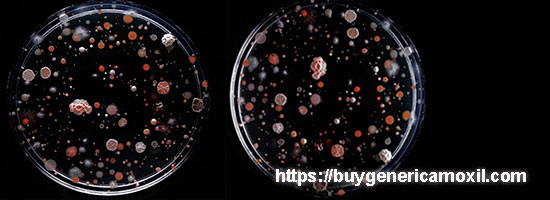Some swallow antibiotics at the slightest runny nose, others categorically refuse to take them even with severe pneumonia, considering them terribly harmful. Because they don’t understand how antibiotics work. He and the other approach is completely wrong.
Antibiotics do help with many severe infections, but only if taken correctly.
To understand in which case the drug will work, and in which it will be absolutely useless and even harmful, you need to imagine how an antibiotic works in the human body.
An antibiotic – what kind of medicine is it?
The very name of this group of drugs contains the basic principle of their action: anti – against; the biotic – life.
Antibiotics are substances of natural origin that have the property of destroying other living microorganisms or preventing their reproduction. In nature, antibiotics are produced by some microorganisms as products of their vital activity.
In pharmacology, antibiotics are used:
- natural – grow microorganisms on nutrien;
- semi-synthetic – add other substances to the natural ones to improve their properties;
- synthetic – obtained completely by chemical synthesis.
Strictly speaking, the latter are not classified as antibiotics, but as antimicrobial drugs, but in everyday life we also call them antibiotics.
So, how do antibiotics work?
In simple terms, antibiotics work in two ways.
- Destroy microorganisms, in this case they are called bactericidal. As a rule, they destroy the wall of the bacterium that protects it. And the bacterium dies.
- Do not allow microorganisms to grow and multiply. These are so-called bacteriostatic antibiotics. They act on the shell through which the microorganism receives food and removes metabolic products – the cytoplasmic membrane. As a result, the bacteria’s metabolism is disrupted and it stops developing. Another action of bacteriostatic antibiotics is aimed at suppressing protein synthesis in bacteria. The result is the same-the cell seems to freeze.
What antibiotics do and do not work on
Most infections are caused by bacteria, viruses, and fungi. Antibiotics work on different types of bacteria and fungi. Antibiotics don’t work against viruses.
To understand why antibiotics are powerless against viral infections, you need to imagine what a bacterium and a virus are.

A bacterium is a single-celled microorganism, that is, a cell that lives in the body-on the skin and mucous membranes. Pathogenic bacteria can enter the human blood plasma (bacteremia). The antibiotic penetrates the bacterium-cell and produces its destructive effect.
The virus is much smaller than a bacterium, you can’t even see it in a normal microscope, only in an electronic one. It is a DNA or RNA (nucleic acids that carry genetic information) enclosed in a shell of protein. The virus can exist only in a foreign cell. By penetrating it and embedding itself in its genome, it begins to multiply, causing disease.
When can antibiotics help?
Antibiotics are prescribed for bacterial infections of various organs and systems:
- respiratory – bronchitis, pneumonia;
- urinary-cystitis, pyelonephritis;
- digestive – peptic ulcer, gastritis;
- nervous-encephalitis, meningitis;
- ent organs – angina, otitis, sinusitis;
- skin-boils.
Special antibiotics work against fungal infections, tuberculosis, syphilis. In diseases caused by viruses, antibiotics are prescribed if a bacterial infection is added to the viral infection.
When do antibiotics fail?
- Antibiotics will not help in the case of viral diseases: influenza, SARS, childhood infections (measles, mumps, rubella, etc.), HIV, etc.
- The antibiotic may not work if it is chosen incorrectly. So, there are broad-spectrum and narrow-spectrum antibiotics. The former work against various pathogenic microorganisms, the latter act only on certain groups of bacteria. For example, penicillin drugs will be effective against Gram-positive bacteria, but will not help with tuberculosis or infection caused by gram-negative bacteria.
- A particular antibiotic may be useless if the pathogen has resistance to it, that is, resistance. Such resistance occurs under the influence of mutations of bacteria as a result of constant use of the drug. Bacteria are living organisms, and they tend to adapt to changing conditions. This property causes resistance to a particular antibiotic. Moreover, the bacteria can transmit this resistance to their next generations, and then the drug stops working against a certain bacterial infection.
- An antibiotic won’t help if you take it the wrong way. First, such drugs are taken in a course – 3, 5, 7 days, sometimes more. You can not arbitrarily reduce the course, stop taking it if you feel better. Otherwise, the disease will return, moreover, resistance to this drug will develop. Secondly, you need to drink antibiotics at strictly defined intervals. If the reception is prescribed once a day, then at the same hour; if twice – after 12 hours, if three times – after 8. This requirement is caused by the fact that the antibiotic in the body works for a specific period of time and when the effect of one tablet ends, you need to take the next one so that the process is not interrupted.
Antibiotics are a powerful remedy against many severe infections. But in order for them to work, they must be taken if the doctor prescribes, and adhering to a clear scheme. Otherwise, they will not only not help, but also cause harm.